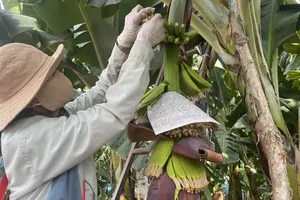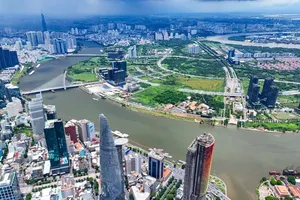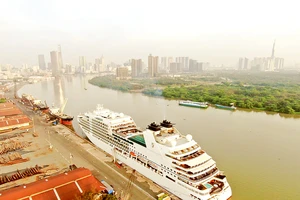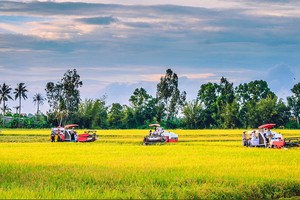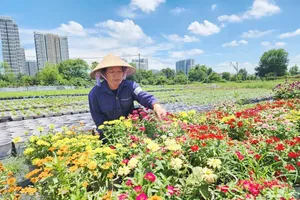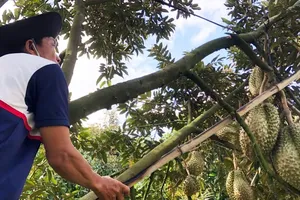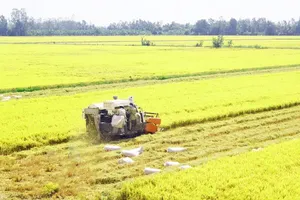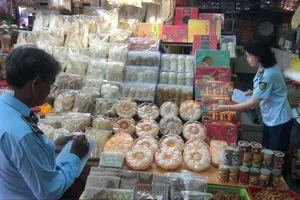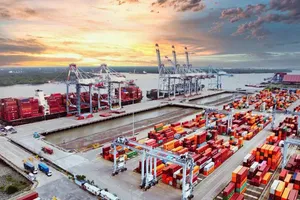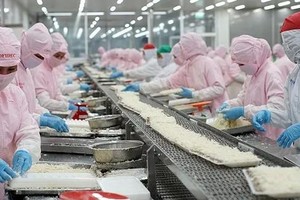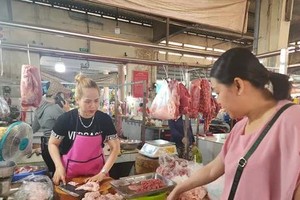Rubber exports in Vietnam could hit US$3 billion this year if Vietnamese exporters take full advantage of the huge global demand for rubber.
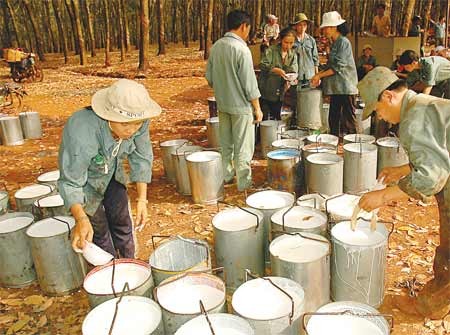
According to the Vietnam Rubber Association, Vietnam is ranked fifth in the world in rubber cultivation and fourth in natural rubber exports.
Vietnamese rubber products have been exported to 39 countries with 60 percent of the product exported to China.
Rubber exports in 2010 were 782,200 tons worth US$2.3 billion, a year-on-year rise of 94.7 percent in terms of value.
The average export price also saw a year-on-year increase of 82 percent to US$3,053 per ton.
The country earned US$798 million from exporting 179,000 tons of rubber in the first three months of this year, an increase of 48 percent and 50 percent in terms of volume and value respectively compared to the same period of 2010.
Rubber is ranked second amongst agricultural products exported in high quantities in Vietnam.
Expanding rubber farms
To create favorable conditions for the rubber industry to develop, the Prime Minister plans to develop the industry until 2015 with a vision to extend further until 2020.
Under the plan, the country will grow 800,000 hectares of rubber trees, which will give 1.2 million tons of rubber latex by 2015.
To implement the plan, the Vietnam Rubber Group has boosted cultivation of new rubber trees in cooperation with Laos and Cambodia to grow rubber trees in these countries.
For the time being, the group is working on a plan to grow 65,000 hectares of trees in 2011, mostly in the northwestern area of Vietnam, Laos and Cambodia, as part of the Government’s plan to cultivate 800,000 hectares by 2015.
Tran Ngoc Thuan, the group’s general director, said the group has developed a plan to grow rubber trees with multiple purposes that can exploit rubber latex and wood.
He said the group has also expanded its farming area to new areas, including northwestern, northern central, southern central and Central Highland border areas.
In addition, the group is looking for new rubber varieties that are appropriate to each region and it will set up joint ventures with farmers to plant these varieties.
Mr. Thuan said the group would plant rubber trees in the southern provinces of Binh Phuoc, Dong Nai, Tay Ninh and Ba Ria-Vung Tau and expand its farming in foreign countries like Laos, Cambodia, Myanmar and South Africa.
Prospects
According to the International Rubber Study Group (IRSG), the world demand could reach 25.5 million tons in 2011 and 27.5 million tons in 2012, while it can produce only 10.97 million tons of natural rubber.
Thanks to the increasing demand, rubber exports have been at an advantage this year. The high demand has also pushed up the export price of Vietnamese rubber to US$5,000 per ton.
The Association of Natural Rubber Producing Countries said if tire companies in Japan get back into production, after the earthquake and tsunami of March 11, and rubber supplies still remain short until the end of May due to bad weather, rubber prices will surge.
The Ministry of Agriculture and Rural Development has forecast that Vietnam will export nearly 830,000 tons of rubber this year, up by 50,000 tons since last year.
Difficulties
The Vietnam Rubber Association said though the country’s rubber industry has seen impressive figures in export, the product has yet to have an outstanding position in the world market, due to quality differences.
Most importers have only known Malaysian, Thai and Indonesian rubber.
Local enterprises have competed to sell as much rubber rather than improving quality.
In addition, relevant ministries have not done any concrete planning for growing rubber trees and processing rubber and this has led to uncontrolled cultivation, which has resulted in mass production of poor quality rubber.
